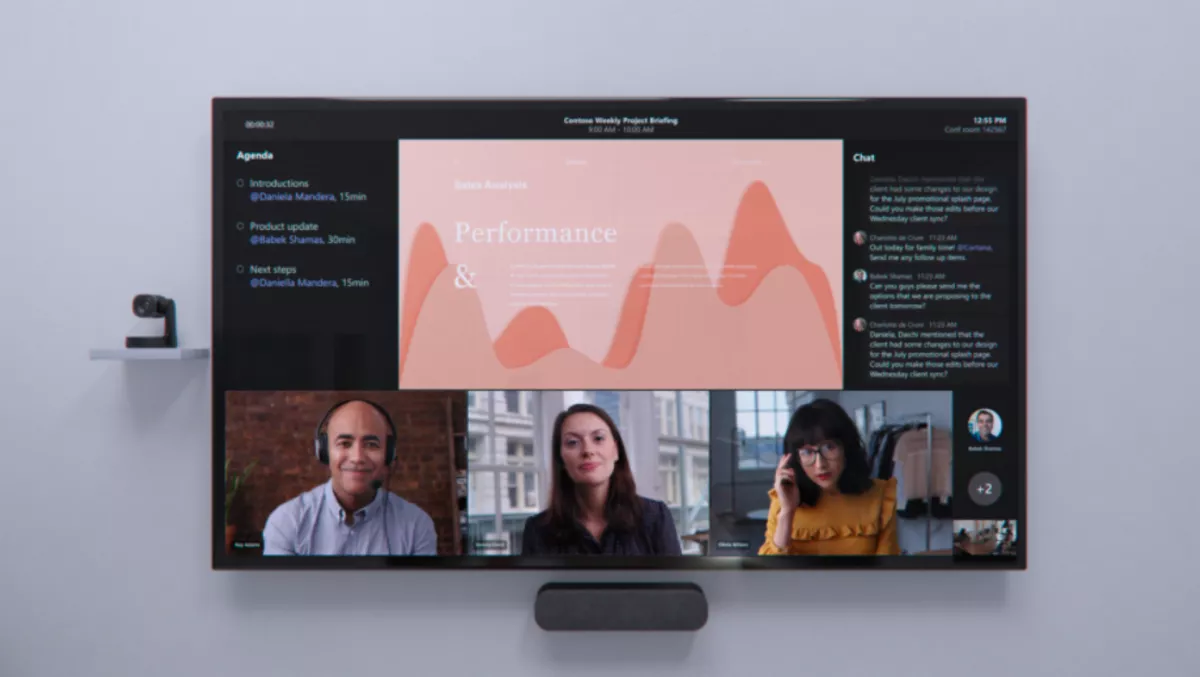
Microsoft unveils new innovations in Teams designed to empower hybrid work
Microsoft has unveiled new innovations in Teams and Viva designed to further empower hybrid work.
The developments will unlock better, and more rich, hybrid meeting experiences for everyone, beginning with designing for the people who aren't in the room and levelling the playing field for every participant, Microsoft says.
Microsoft is adding new meeting experiences with enhancements to Teams Rooms including new video layouts, Whiteboard experiences, Fluid components and more.
Avid users of the Teams chat function will soon be able to pin a message and reply to a specific chat message, helping scale back on some of the digital clutter..
Additionally, Microsoft is bringing users a curated set of guided meditations and mindfulness exercises from Headspace to the Viva Insights app in Teams, designed to help users start their day "grounded, relax your mind before a big presentation, or disconnect from work in the evening".
"As workplaces open in many regions around the world, I hear from customers every day that they can't wait to get back to in-person collaboration. I feel it myself - and look forward to seeing many of my coworkers in person one day soon," says Jared Spataro, corporate vice president at Microsoft 365.
"But even more than that, I look forward to finding new ways to help people connect and engage regardless of location and time zone," he says.
"At Microsoft, we believe that hybrid work is the future of work and that to empower their people to succeed in hybrid work, business leaders will need to reimagine their organisations with a new operating model for people, places, and processes."
Over the course of this year, Microsoft will roll out front row in Teams Rooms, an "immersive room layout that makes interactions feel more natural" and gives in-room participants a greater sense of connection to remote participants.
Microsoft has moved the video gallery to the bottom of the screen so remote participants are face-to-face with those in the room. And to help everyone stay engaged, meeting content is surrounded by contextual meeting information like the agenda, tasks, and notes. Meeting chat will also be clearly visible to those in the room, so they can see and respond to comments shared through chat.
To help remote participants establish their presence in the room and maximise inclusion, Teams Rooms will expand screen real estate using new video layouts that disperse the video gallery across multiple displays when content isn't shared.
Jabra, Logitech, Poly, and Microsoft's newest Teams device partner Neat are using advanced AI-powered camera technologies to provide new video views optimised for hybrid meetings, allowing every person in the room to be seen more clearly.
"Meetings have increased significantly over the past year, along with unstructured communications," says Spataro.
"Research from our Work Trend Index shows the average Teams user is sending 45 percent more chats per person per, week than they did one year ago. And ad-hoc, unstructured meetings are on the rise as well.
"To help manage this digital overload, new Fluid components in Teams meetings make it easy to co-create an agenda, take notes, and assign tasks, right within the Teams meeting, and access persistent recap content whenever you need it," he says.
"And the note, agenda, and tasks from meetings will be automatically "placed" in the new meeting notes home of OneNote. While the meeting is underway, take the discussion a step further by ideating and brainstorming together by creating and editing live Fluid components in Whiteboard.
"Fluid components can also be leveraged across Outlook—in email or the calendar—making it easier to manage your time, agenda, notes, and tasks across apps."


